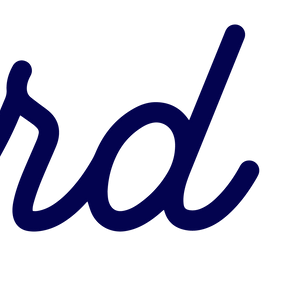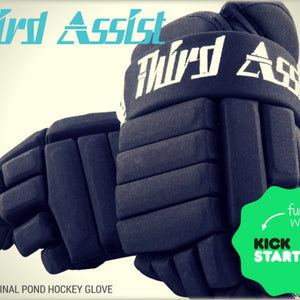When I was in school at the University of Maryland I was always fascinated by entrepreneurship and creating products that had use in my life, and ideally in the lives’ of others as well. I spent as much free time as possible reading up on the entrepreneurship process until I read the most simple, yet best advice I have received to date: You can formulate the best plan ever in your head, but you won’t get anything done until you take the first step. Every single person has great ideas, but only about 5% of people begin to act on them. Write down the steps for start-up, and knock out #1. Then #2. Each subsequent step gets easier as you build momentum. I figured I was a twenty-something in school with nothing to lose but a little pride, so why not give it a go. I started the first steps which in my case included developing a company name, website, legitimate email, product designs, and finally one of my favorite steps of prototyping with manufacturers.
If you’re on the site now you probably already know what my product to be built was, but if you do not know I’ll give a couple sentence intro. Growing up playing hockey outside in Alaska there were days I couldn’t feel my hands or feet at all after 30 minutes in freezing temperatures. If I could make gear to keep blood flowing to my extremities I would feel better, play better, and maybe even look better. So after some entertaining times messing around with different insulation materials and testing different outer shells (Check out gag gloves, which albeit may not be pretty at all, but they work great) I was able to create the Refhlex gloves. These gloves met the three criteria I was looking for: Looks good, works good, and feels good. It took me over a year of material testing to find the perfect combination, but I was pumped to have made it work. Nothing like these had ever been created before, so I knew these were worth sharing.

Then came the step of how to share. Should I go the investor route, loan route, or the crowdfunding route? The crowdfunding route is the newest option of the three, and the most appealing as well. Crowdfunding through a website like Kickstarter offers benefits the other two routes cannot. It allows an entrepreneur to test an idea in a no-risk, high-reward scenario all the while receiving feedback on a product. You set a funding goal and if you achieve the goal you can start-up production, and if not you don’t receive a penny and it’s back to the drawing board. I gave Kickstarter a trial run in 2014 to learn the ropes and it was successful, so I was confident Third Assist and the Reflhex gloves would follow suit. In the late summer of 2015 I launched the Third Assist Pond Hockey Gloves on Kickstarter.
And they failed. It was a bit of a rushed effort in comparison to my successful trial run, but I still expected more out of Third Assist. After failure I debated what steps to take next, but out of failure I’ve learned a heck of a lot more. And this may be the reason you’re visiting this post in the first place- The Lessons Learned.
Lesson 1: Seasonality on Kickstarter is Huge
I knew this before I went for the Third Assist campaign. My rationale was if I went for the campaign in the late summer, I could fulfill before the holidays. Just in time for prime pond hockey season. Well that was wrong move #1. It was also the wrong move for one of the most successful KS campaigns ever: The Coolest. The Coolest ran in the winter and failed. They returned in the summer and made a cool thirteen million dollars on Kickstarter.
Lesson 2: Day 1 can make or break your campaign
I learned that Kickstarter ‘Popular’ rankings are based off of how much funding has been raised, number of backers, and time spent on Kickstarter. Staying in the ‘Popular’ rankings keeps eyes on your project and therefore more potential backing. Having a strong start from the beginning can keep up the momentum because your campaign remains ‘Popular’. This is especially the case given the typical “U” shaped curve of a Kickstarter campaign where you lose momentum quickly after the first couple days. Popular rankings reshape the standard “U” curve.

Lesson 3: Pump up backers, pump up momentum
A placement in the ‘popular’ rankings is huge for keeping a campaign relevant over thirty days. Although nearly half of the backers on the initial successful Kickstarter campaign came from outside sources, the other half came from within Kickstarter, especially from repeat backers. This makes sense as one who has participated in crowdfunding before is more likely to back than someone who is doing it for the first time. This is where I’ll give credit to someone who figured this out and played it to their advantage big time: The Passion Planner. The planner offered a PDF version of their product at $1. Why do this? Well it costs nothing and in return you get huge backer numbers. This keeps your product in the ‘popular’ rankings for number of backers, and further it gets shared over and over. The back of $1 goes way further than simple financial benefits. This strategy helped the planner raise over $700K.

I’ve learned a few other lessons over the past few months, but those are the ones that should stick with the reader. They’re the ones that have stuck with me. While pond hockey related gear is much more of a niche than a personal planner or multi-functional cooler, the same lessons can still be applied just on a much smaller scale. There’s plenty more to learn, but after taking in this knowledge I have come to the conclusion that a round two is necessary. Right time, right strategy, and its wholly possible for a different outcome. I believe there are few factors in our favor for round two and here they are:
Success Factor 1: It’s winter. Simply put its outdoor hockey season. Frozen fingers aren’t on your mind when you’re turning up the AC in the middle of August. That was fail number one on round one.
Success Factor 2: Lowering the start-up costs (Kickstarter funding threshold). We were able to knock down the start-up costs slightly on round two given lower minimum order quantities (MOQ) negotiations and changes with patent processing.
Success Factor 3: Backer base. If we can get the same KS backer base from round one, that’s a heck of a lot of momentum to start for round two. Day 1 can make or break your campaign. This worked out for a former Kickstarter partner of ours called Hydaway. The group over there initially failed on round one receiving $20,000 of their $40,000 goal. Round two proved completely different. A strong start propelled them to success in the first couple days and they ended up with over $260,000 in backing.

Success Factor 4: The Buff. We’re creating our own version of the PDF passion planner. For this next campaign we will be selling a Third Assist Pond Hockey buff at just $4. This includes free shipping to the U.S. If one goes in REI they’ll find buffs selling for $20 or more. We’ve made these in the past and we love them. We’re willing to take a bit of a financial hit if it gets more momentum for our campaign and more eyes on our gloves.

Success Factor 5: Gag Gloves. These are the not-so-pretty gloves we’ve had fun creating in the past. While they are functional, they are nowhere near as advanced or sleek as our Reflhex gloves. As of December 2015 we have sold more of these gloves than ever which shows promise in the venture. Either people want bright gold gloves, or we’re not the only ones who wouldn’t mind warmer hands when playing in freezing temperatures.
Success Factor 6: In writing this I keep switching off from “I” and “we”, and I should start getting used to saying “we”. During the last campaign most of the efforts were made solo. That’s quite the challenge when working and going for a Master’s full-time. I’ve read a number of posts from project creators comparing running a Kickstarter to a full-time job in itself. That said, I know I needed an extra hand to give this a round two. More than that I brought on a bigger brain too in my MBA-wielding and lifelong hockey playing friend Alex. We’re hoping an extra brain and extra effort can take Third Assist to a successful Kickstarter relaunch.
Operating a small business is one of the most exciting and challenging projects I have ever taken on. It’s a constant learning process and I believe it must be viewed that way. I don’t think I’ll ever be able to say I’ve learned how to run a perfect campaign or a perfect business, but I hope I can say I’ve learned enough from my failures not to repeat them. I wrote this post today so that others can learn from my challenges and maybe one day give their own Kickstarter a run. For now I hope I’ve learned enough to confront the challenge ahead and make Third Assist successful in 2016.
-Third Assist Founder Chris DeVore
”A smart man learns from his mistakes. A wise one learns from the mistakes of others”




